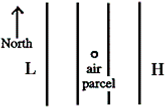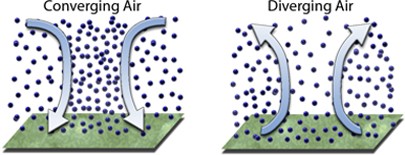The half-life of carbon-14 is about 6000 years. Assume that a sample of charcoal formed by burning of living wood 15,000 years ago. How much of the original carbon-14 would remain today?
A) between one-fourth and one-eighth B) between one-half and one-fourth
C) more than one-half D) between one-half and one-third
A
You might also like to view...
North
?

A. west B. north C. south D. east
At greater depths, rocks are
A) stronger and more brittle. B) weaker and more plastic. C) weaker and more brittle. D) stronger and more plastic.
Most metamorphic rocks near the Earth's surface are derived from three common sedimentary rocks. Which three?
A) Conglomerate, graywacke, and arkose B) Shale, quartz sandstone, and limestone C) Basalt, travertine, and claystone D) Quartz sandstone, arkose, and siltstone
Dynamic forcing of upper air currents will create
A. upper air convergence at A that results in surface high pressure. B. upper air divergence at A that results in surface high pressure. C. upper air convergence at B that results in surface high pressure. D. upper air convergence at B that results in surface low pressure.